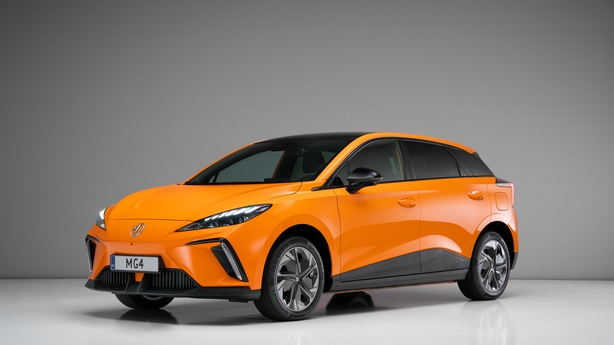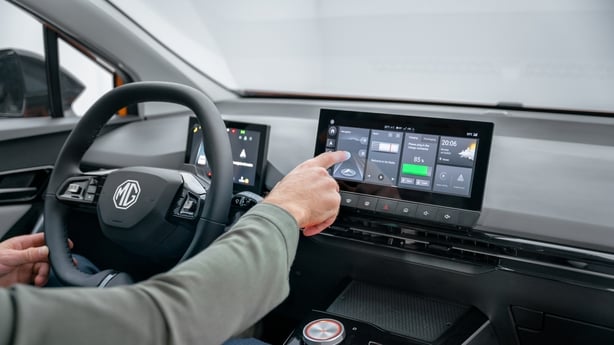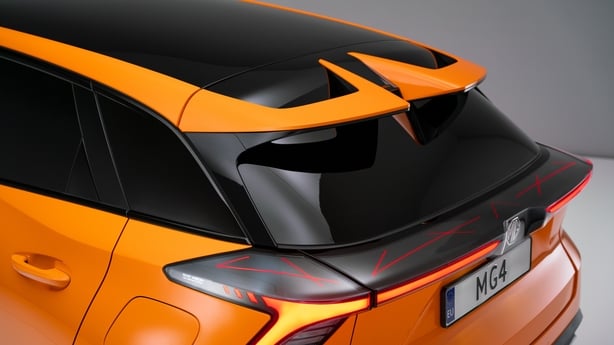When it comes to value for money, standard equipment and a well-packaged offering, the Chinese MG brand's new MG 4 is now out in front on the Irish market.
Within the next few months there will be at least three Chinese car brands on the Irish market and they are likely to pile on the pressure on other manufacturers on a number of fronts but, most importantly, in terms of price.
The latest MG 4 is a case in point. Here we have a family hatchback that is broadly comparable to a Volkswagen ID.3 in terms of size and capacity but not when it comes to the price. The ID.3 is currently coming in at a with a price tag of €42,212.
The entry level version of the MG 4, on the other hand, is coming in at €27,495. Both prices include grants. Even the Renault Zoe EV has a price of €33,995.

The version I drove was the one with the bigger battery capacity, but even this comes in €34,495.
Does this mean that the MG 4 must, by definition, be a cheap option where everything has been sacrificed to keep the cost down - a bargain basement alternative ? The answer is emphatically no.
It’s a matter of economies of scale. Tesla has already produced one million cars in China and the chances are if you’re reading this on a Mac product, it was made in China.
Things are simply a lot cheaper to produce in China.
MG’s estate car has already become popular with Irish taxi drivers and any one of them I’ve asked about their experience with them so far has been positive. Most of them cite the incentivised pricing and the amount they are saving on petrol or diesel. They learn to manage their range to sit their charging options.
The 4 is a car that continually surprised me. Starting with the price, obviously. I was impressed by the styling, which is sharp and includes elements like the two wings that extend slightly over the rear windscreen to form a split spoiler, very nice LED light clusters and a perfectly acceptable side and front profile.

The interior is uncluttered and far from fussy and, yes, there are some surfaces that remind you this is a budget car but, to be honest, it was rather like other EV’s I’ve driven that remind you costs need to be kept down. I’d describe it as no-nonsense rather than a no-frills interior.
The 10.25 inch infotainment screen that controls things like navigation, radio and climate controls is decent but the graphics are certainly not the sharpest and can he hard to read on a bright day. The sat. nav was also limited and overly sensitive but it did the job eventually, even if it could not distinguish between a road and an avenue with the same name.
There is perfectly comfortable seating for four and the cabin has an airy feel. The seats are supportive and there is good head and legroom. The pedals, however, are designed for smaller feet than mine and took a little time to adjust to.

The boot is an adequate 363 litres but this can obviously be extended when the rear seats are folded down, making for a total capacity of over 1,000 litres.
What also surprised me about the car was how well it handled, absorbing bumps easily and giving a driving experience that made it feel like a more expensive car.
Now to the all-important matter of range. There are two battery sizes - the 51 kW and 64 kW units. The former has a claimed range of 350 km and the latter a range of 450 km. I drove the bigger battery version and began my driving with 87% charge and an available range on the clock of 286 kilometres in slightly cold weather (this does have an impact on battery range). After 160 kilometres of mixed driving, I still had 53% battery available and a range of 189 kilometres.
My average consumption was about 16.3 kW per 100 kilometre. I’ve driven other similar cars that consumed well over 20 kW in the same kind of driving conditions.
It was a comfortable experience - unlike that of driving other similar cars with similar capacity - and an economical one.
Even allowing for the smaller battery range on the entry-level model, this kind of frugality of consumption and battery capacity is impressive. When you consider the entry-level price of €27,495, the standard equipment list that includes LED lights, automatic cruise control, automatic climate control and rear parking sensors.
Right now, my instinct and experience tell me that the growing range of Chinese cars on the Irish market is going to fundamentally change that market. Many buyers cite the initial cost of an electric car as the biggest disincentive to buying one. That has now changed.
I’m anxious to see what else is in the pipeline from China. The surprises may be only just beginning.


